As a homeowner, the roof over your head is one of the essential parts of your home.
It’s the part that keeps you and your family safe from the elements. But how do you know if your roof needs repairs? The good news is there are some signs that you need a roofing expert.
Recognizing the signs, you may need to call a roofing repair expert is essential. If you notice these five signs, it may be time to call in a professional.
Read on to find out what they are!
Get to Know 5 Signs You Need a Roofing Repair Expert

Are you having trouble identifying why your roof is leaking? Are you starting to feel like it’s time for contractors?
If so, you might be in luck because you can do a few things to figure out the issue on your own.
Here are five signs you need a roofing repair expert to help you out:
1) Your Roof Is Leaking

If you’re starting to see water stains on your ceiling or puddles in your attic, then you might have a severe roofing issue. Leaks can occur due to aging shingles, damaged flashing, or improper roof installation. That’s why it’s crucial to contact a roof repair expert immediately.
Not only can they detect the source of the problem, but they can also give you advice on how to fix it and prevent future damage. An expert can assess the severity of the leak and recommend the necessary steps for resolving it quickly and effectively.
Please don’t wait until it’s too late. Address any roof leaks before they cause further problems.
2) There Are Missing or Damaged Shingles
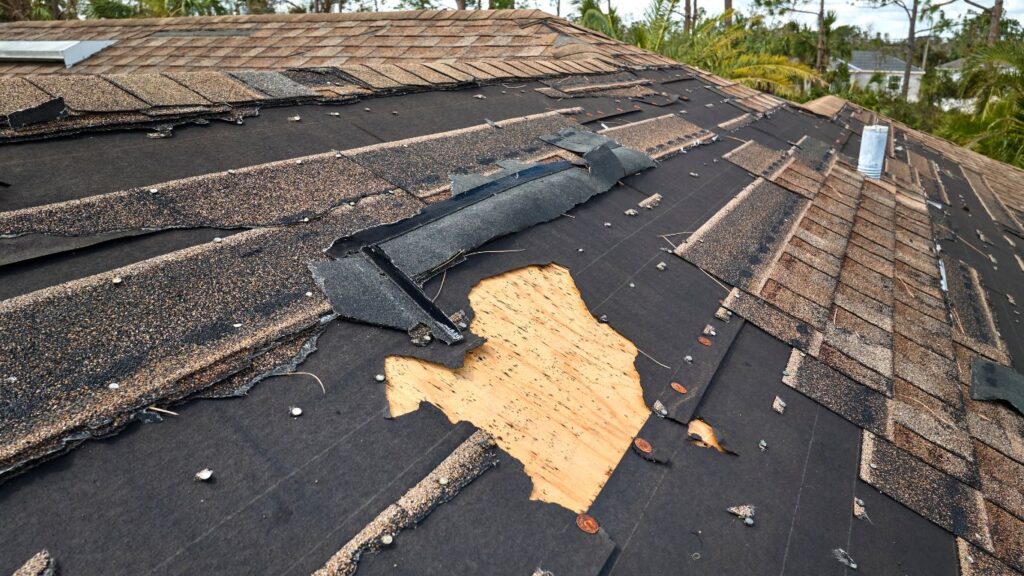
One of the most obvious signs that you need a roofing repair expert is when you notice missing or damaged shingles on your ceiling.
Missing shingles can leave your roof exposed to the elements, allowing water to seep in and cause damage. Damaged shingles can also reduce the protection of your home’s roof, making it vulnerable to leaks and other structural issues.
A reputable roofer can assess the damage’s extent and recommend the best repair solution for your roof. Not only can they fix your existing shingles, but they may also suggest replacing them with new shingles for even better protection against the elements.
Don’t put off calling in a professional if you think there is any risk of further damage to your home’s roof. It’s much better to be safe than sorry!
3) The Roof Is Sagging

Have you noticed that your roof seems to be sagging or drooping in certain areas? It is not a good sign and can indicate significant structural damage.
Sagging may be caused by rotting wooden components in the roof, including trusses, rafters, and other framing members. If your roof is sagging, it’s essential to contact a professional roof repair expert as soon as possible.
A roofer can inspect your roof to determine the cause of the sagging and provide the necessary repairs to ensure your roof is safe and secure.
4) Mold and Mildew Growth

Mold and mildew growth on your roof can signify that you need roof repair services. Not only is it unsightly, but it can also lead to further damage down the line. If you notice patches of mold or mildew on your roof, it’s essential to act quickly and contact a roofing repair expert.
Mold and mildew thrive in moist environments, so if you have a leaky roof, then it’s likely that there will be mold and mildew growth. In some cases, the source of the leak is not easily visible. A roofing repair specialist can pinpoint where the leak is coming from and address the issue before any further damage is done.
Also, mold and mildew can form when there is inadequate ventilation in your attic. Proper attic ventilation helps reduce humidity levels, which can deter the growth of mold and mildew.
If you suspect that you have mold or mildew growth on your roof, don’t wait any longer to get help. Contact a roofing repair expert today to assess the situation and take the necessary steps to protect your home.
5) Water Stains on Your Ceiling
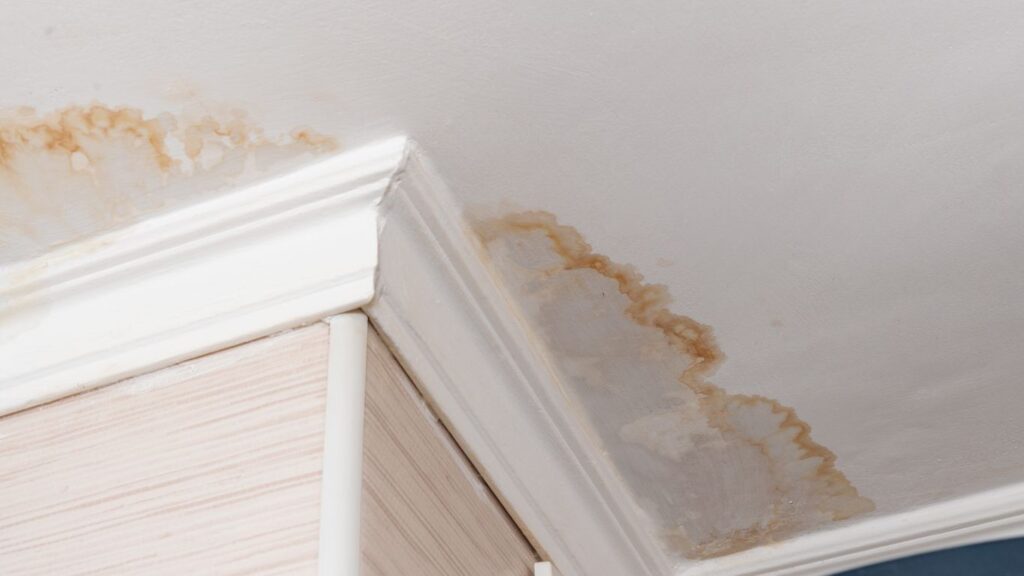
One of the tell-tale signs that you need roof repair is water stains on your ceiling. If you notice discoloration or water spots on your ceiling, this could signify a roof leak.
Many factors can cause water spots, but a leaking roof is often the culprit. To prevent further damage, you must have your roof inspected as soon as possible if you have noticed water stains.
A roofing repair expert can quickly identify where the leak is coming from. Don’t let water spots go unchecked. They could mean more significant problems down the road.
Frequently Asked Questions
What Should I Look for in a Roofing Repair Expert?
When selecting a roofing repair expert, it is essential to ensure they have the proper credentials and experience. Check their reviews and ratings, ask for references from previous clients, and verify their licensing and insurance.
How Often Should I Inspect My Roof for Damage?
Generally, having your roof inspected at least twice a year is recommended. The best times are in the spring and fall, when weather conditions can cause more damage to your roof.
What Kind of Warranty Is Available for Roof Repairs?
Most reputable roofers will provide a warranty for the materials used and their labor.
Conclusion
When it comes to roofing repairs, the key is to act fast. If you have noticed any of the five signs mentioned in this blog post, it’s time to call a roofing repair expert.
Taking preventive measures now can save you a lot of money and stress. Don’t hesitate to seek help when you need it. A professional roofer can assess the damage, offer expert advice, and provide quality artistry. Your roof is essential to your home and should always be in tip-top shape.
Please don’t wait until it’s too late!

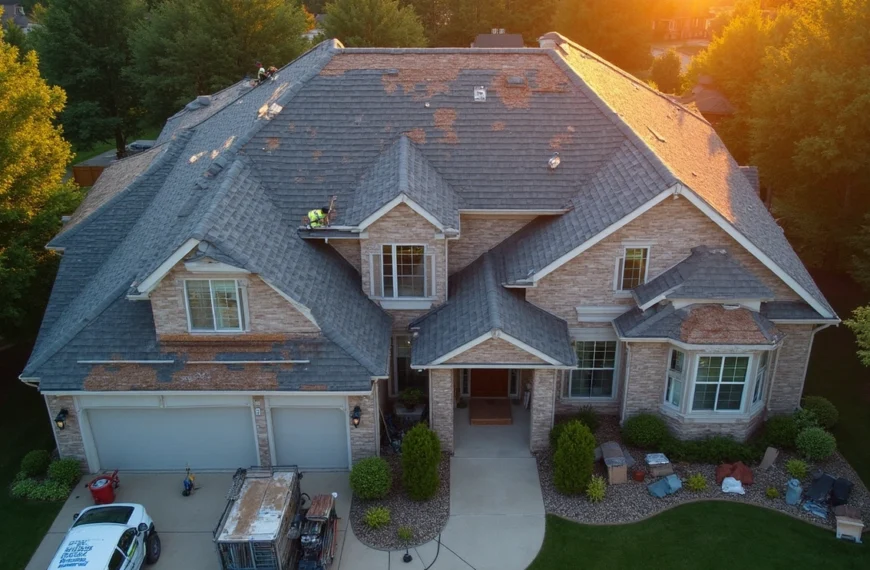
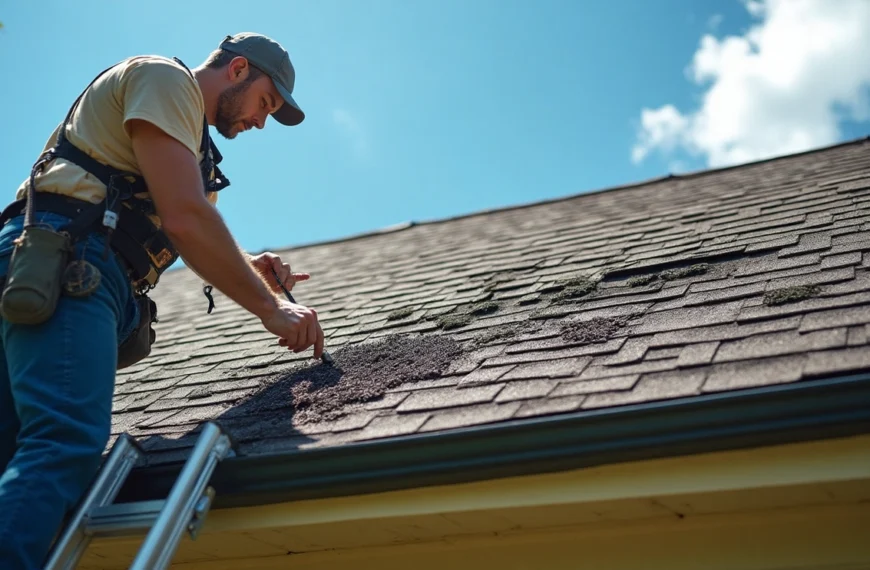

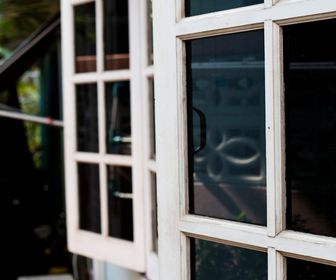








![No Win No Fee Lawyers: The Hidden Truth About Settlement Cuts Legal representation through no win no fee lawyers gives clients a way to fight cases without paying anything upfront. Many clients don't know that these services take a big chunk of money after winning the case. Lawyers usually take 25% to 40% of what you win as their contingency fee. The amount lawyers take from settlements can add up fast. A $100,000 settlement means your attorney gets $30,000 if they charge a 30% fee after winning your case. Your solicitor's cut might be £10,000 from a £30,000 compensation award, based on your agreement percentage. This payment model stays pretty much the same for no win no fee lawyers in different places, though percentages can change. This piece breaks down what you need to know about contingency fee deals. You'll learn about standard fee ranges, extra costs beyond the basic fee, and times when this payment setup might not work in your favor. Smart clients should think over these money matters before signing up with a lawyer to make better choices about their legal help. What No-Win No-Fee Really Means Image Source: Express Legal Funding A no-win no-fee arrangement, also called a Conditional Fee Agreement, changes the way people get legal help. This payment approach removes the need to pay legal fees upfront and creates a partnership between clients and their attorneys. How contingency fees work No-win no-fee agreements are based on contingency fees. Lawyers get paid only when they win compensation for their clients. Most lawyers take between 25% and 40% of the final amount, based on how complex the case is and where it's filed. Lawyers take their cut after winning the case. To name just one example, see a case where a lawyer wins £30,000 in compensation with a 33% fee - they would receive £10,000. On top of that, some law firms use sliding scales where they charge less for quick settlements and more if the case goes to trial. The law requires a written agreement before any work starts. This paperwork spells out the lawyer's percentage, what costs you'll need to cover, and other key details. What happens if you lose the case The meaning behind "no-win no-fee" is clear - losing your case means you won't pay your lawyer anything. All the same, you should know about a few money-related details. You won't owe your lawyer when you lose, but some deals might make you pay for court fees, expert witnesses, or other case expenses. The other side could also ask you to pay their legal costs. Many lawyers suggest getting "After Event" insurance to protect their clients. These policies cover any costs if you lose your case, which makes the no-win no-fee setup much safer. Why lawyers offer this model Lawyers want to make legal help available to more people, so they offer these payment plans. This setup helps people who don't have much money take legal action when they have valid claims. The payment structure motivates lawyers to work hard. They only get paid by winning cases, which pushes them to get the best results possible. Lawyers carefully assess each case before taking it on a no-win no-fee basis. They usually accept cases that have a good chance of winning, since they put in lots of time and resources without any guaranteed payment. The Real Cost: How Much Do Lawyers Take from a Settlement Image Source: Greiner Law Corp. The true cost of no-win no-fee legal representation becomes clear once we look at contingency fees. Many clients feel surprised to see a big chunk of their settlement checks going to their attorney's fees. Typical percentage ranges (25%–40%) No win no fee lawyers typically ask for 25% to 40% of the total settlement amount. Personal injury attorneys usually take 33.3% (one-third) of the awarded compensation[101]. Lawyers and clients agree on this percentage before any work starts on the case. Several factors shape the final percentage. Your chances of winning, case complexity, and the work to be done play key roles in determining the attorney's cut. Some areas have laws that cap the maximum contingency fees for specific types of cases. Sliding scale based on case complexity Law firms often use a tiered fee system that changes with the case stage and complexity. This scale rewards quick settlements while paying attorneys fairly if more work becomes needed. The fee might start at 30% if the case settles before lawsuit filing. This number could climb to 35% after filing or reach 40% if the case goes to trial. Law firms often group cases by complexity: 10%-20%: Simple cases with straightforward settlements 25%-35%: Typical personal injury cases 35% and above: Complex cases requiring extensive resources Examples of payout breakdowns These ground examples show how fees affect settlements: A $15,000 settlement with a 33.3% contingency fee.pdf) puts $5,000 in the attorney's pocket, leaving $10,000 for the client. Similarly, from a $100,000 settlement with a 33% fee, the attorney gets $33,000 while the client receives $67,000[102]. Complex cases tell a different story. A $100,000 settlement with a 30% fee plus $5,000 in extra costs leaves $65,000 for the client after all deductions. These fees substantially change the client's final payout. Hidden Costs You Might Not Expect Image Source: Nelson Personal Injury Lawyers Beyond percentage-based fees, clients often feel surprised by extra costs that can reduce their final compensation by a lot. These hidden costs show up in the fine print of no-win no-fee agreements. You should think over these details before signing. Court filing and expert witness fees Legal proceedings come with unavoidable court filing fees. These charges differ by jurisdiction. They usually range from $30 for small claims to several hundred dollars for complex civil lawsuits. Expert witnesses can be expensive, with hourly rates ranging from $150 to $1,000 based on their credentials and testimony complexity. Expert witnesses charge more for court appearances than consultation work because of added pressure and prep time. Clients might still need to pay experts for their prep work even if the case settles before trial. Medical report and investigation costs Medical documentation is a vital part of many legal claims. These costs include fees to release medical records, create specialized reports, and prepare documents. Investigation costs cover evidence gathering, police reports, witness interviews, and other fact-finding work needed to build a strong case. Of course, some firms say they'll cover these expenses upfront, but clients don't completely avoid these costs. When these costs are deducted from your compensation Law firms take these expenses from the settlement amount before they calculate their percentage fee, though each firm handles this differently. Some lawyers subtract these costs after figuring out their contingency fee, which changes how much money clients end up with. Most firms pay case-related costs during the process and get their money back from the settlement. The defendant usually pays most simple legal costs and disbursements in successful cases, but not always everything. Insurance protects clients from costs in unsuccessful claims at many law firms, but this protection isn't guaranteed. Clients should review their agreements carefully since they might still need to pay specific expenses even if they lose their case. When No-Win No-Fee Might Not Be the Best Option Contingency fee arrangements give many people access to justice. However, this payment model doesn't always work in a client's best interests. Knowing these limitations helps clients make better decisions about their legal representation. Cases with unclear liability Lawyer no win no fee arrangements work best in cases where fault is clear. We assessed the probability of success before taking contingency cases. Lawyers might turn down cases if there isn't enough evidence of the other party's negligence or if liability isn't certain. Cases with multiple responsible parties create more challenges. The situation gets complicated fast when several parties share liability. Lawyers are less likely to take these cases on contingency. They need to be confident they can prove the other party's negligence before accepting a case. Low-damage or low-payout claims Small claims often don't work well with the contingency model, even with real injuries. Cases that have minimal injuries or limited financial damages might not bring enough compensation to cover legal costs. The potential settlement needs to be big enough to pay for investigations, witness interviews and court fees. Personal injury lawyers often turn down cases where the "compensation potential" is too small. This doesn't mean the claim isn't valid - it just means the economics don't add up for a contingency arrangement. Situations where hourly billing may be better Hourly billing has clear advantages in certain cases. Clients see exactly what they're paying for - every hour worked and task completed. This model works well for cases that need lots of attention but don't have clear financial outcomes. Complex litigation with opposing parties works better with hourly billing and a retainer fee. Clients have more control over their case and don't feel pressured to settle quickly. Cases that need extensive preparation but have uncertain outcomes fit the hourly model better. Lawyers can spend the time needed without worrying about contingency limits. This approach often leads to better representation, especially for complex legal issues that need special expertise. Conclusion Understanding the Full Picture Before You Sign No-win no-fee arrangements offer legal representation without upfront costs. Of course, this seems attractive at first glance. In spite of that, you need to think about how these agreements can affect your final compensation. Legal fees usually range from 25% to 40% of your settlement - but that's just the start. You'll face more deductions like court filing fees, expert witness costs, and charges for medical documentation. What looks like a "free" service ends up taking a big chunk of your compensation to cover legal expenses. These arrangements work best in specific situations - cases with obvious liability, substantial damages, and solid evidence. If you have a low-value claim or complex liability issues, traditional hourly billing might serve you better. Without doubt, you should ask for clear explanations of all possible costs before signing anything. Read the fine print closely, especially when you have to deal with expenses in unsuccessful cases. Ask to see sample settlement breakdowns that show all deductions. This helps you picture what you might actually take home. Your choice to go with a no-win no-fee arrangement depends on your situation. This model helps if you don't have money to pursue valid claims. But if you have a strong case and enough funds, other fee structures might let you keep more of your compensation. Whatever payment model you choose, knowing exactly how much lawyers take from settlements helps you make better decisions. This knowledge lets you approach legal representation with real expectations and better control over your money. FAQs Q1. What percentage of a settlement do no-win no-fee lawyers typically take? No-win no-fee lawyers typically charge between 25% to 40% of the final settlement amount as their contingency fee. The exact percentage often depends on the complexity of the case and the stage at which it is resolved. Q2. Are there any hidden costs in no-win no-fee arrangements? Yes, there can be additional costs beyond the lawyer's percentage fee. These may include court filing fees, expert witness costs, medical report expenses, and investigation costs. These expenses are usually deducted from the settlement amount before or after the lawyer's fee is calculated. Q3. What happens if I lose my case in a no-win no-fee arrangement? If you lose your case, you generally won't have to pay your lawyer's fees. However, you might still be responsible for certain expenses like court costs or the opposing party's legal fees. Many lawyers offer insurance to protect clients from these potential costs in case of an unsuccessful claim. Q4. When might a no-win no-fee arrangement not be the best option? No-win no-fee arrangements may not be ideal for cases with unclear liability, low-value claims, or complex legal issues requiring extensive preparation. In these situations, traditional hourly billing might be more appropriate and potentially more cost-effective for the client. Q5. Can I negotiate the percentage a lawyer takes from my settlement? Yes, the contingency fee percentage is often negotiable. It's typically agreed upon and formalized in writing before the lawyer begins working on your case. Don't hesitate to discuss the fee structure with your lawyer and ask for a detailed breakdown of potential costs and deductions.](https://consumersweek.com/wp-content/uploads/2025/06/No-Win-No-Fee-Lawyers-The-Hidden-Truth-About-Settlement-Cuts-870x570.webp)


